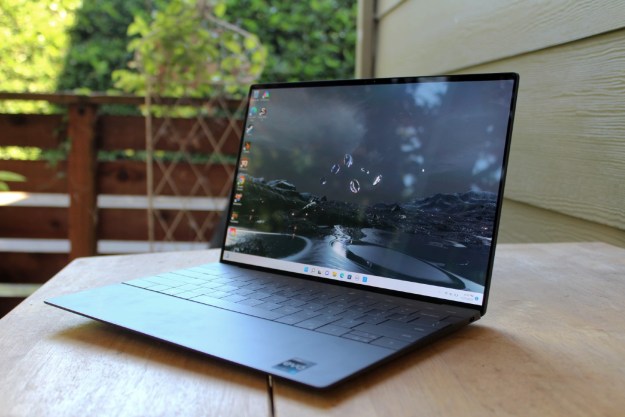Upgrading your router can improve your wireless speed, especially if you stream high-definition videos or play games online. Buying a newer model may also improve wireless coverage, so you can watch and play anywhere in the home or office. Our current favorite is Netgear's Nighthawk RAX50 AX5400, namely because it packs a ton of great features into a device that remains extremely affordable.
Along with our favorite, we reviewed and compared some of the latest models to select the best Wi-Fi routers you can buy right now. Take a look at the recommendations below to get a better idea of which device matches your needs. Whether you're looking for a Wi-Fi 6 router, a budget-based alternative, or the best router for gaming, we've got you covered.

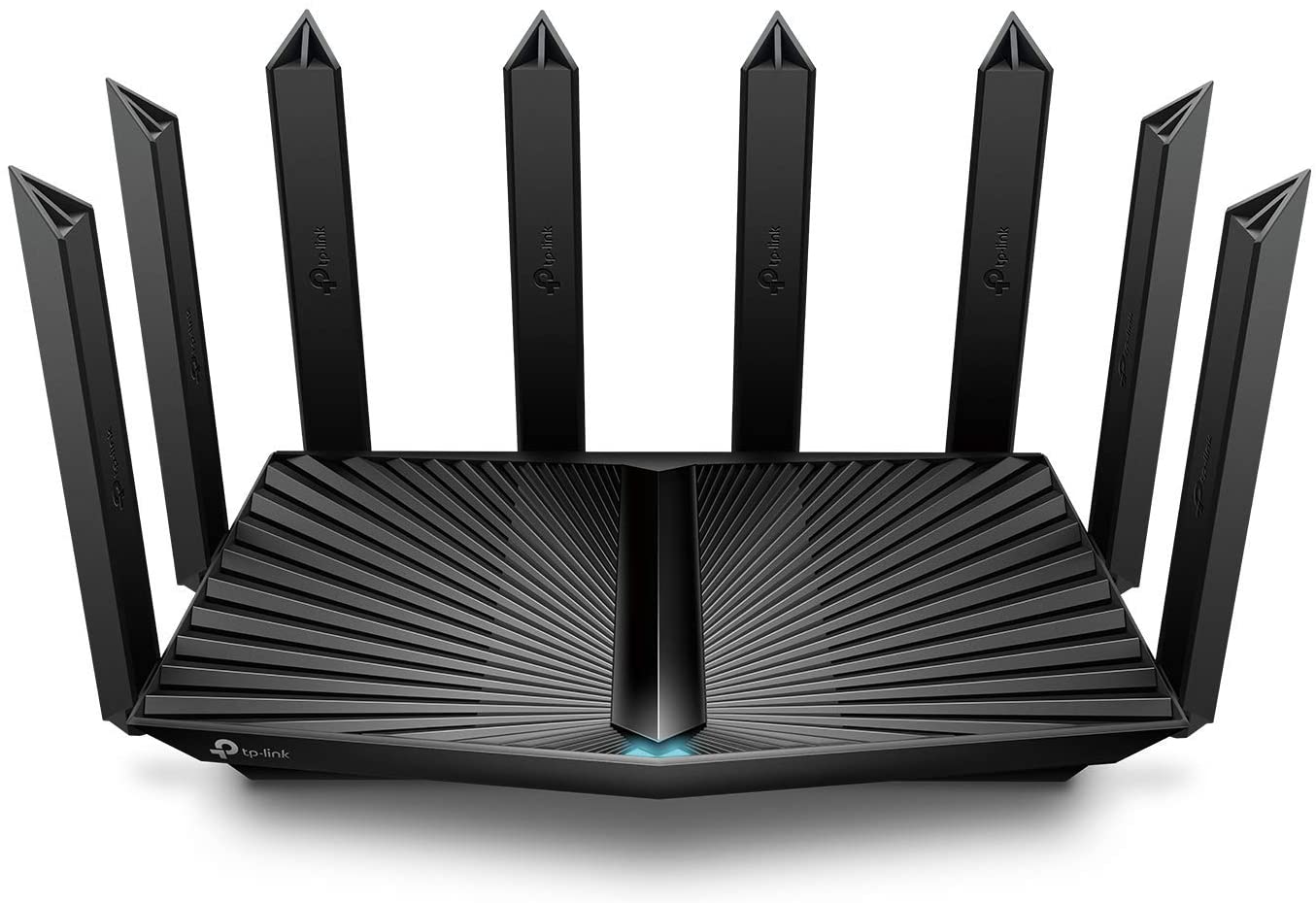




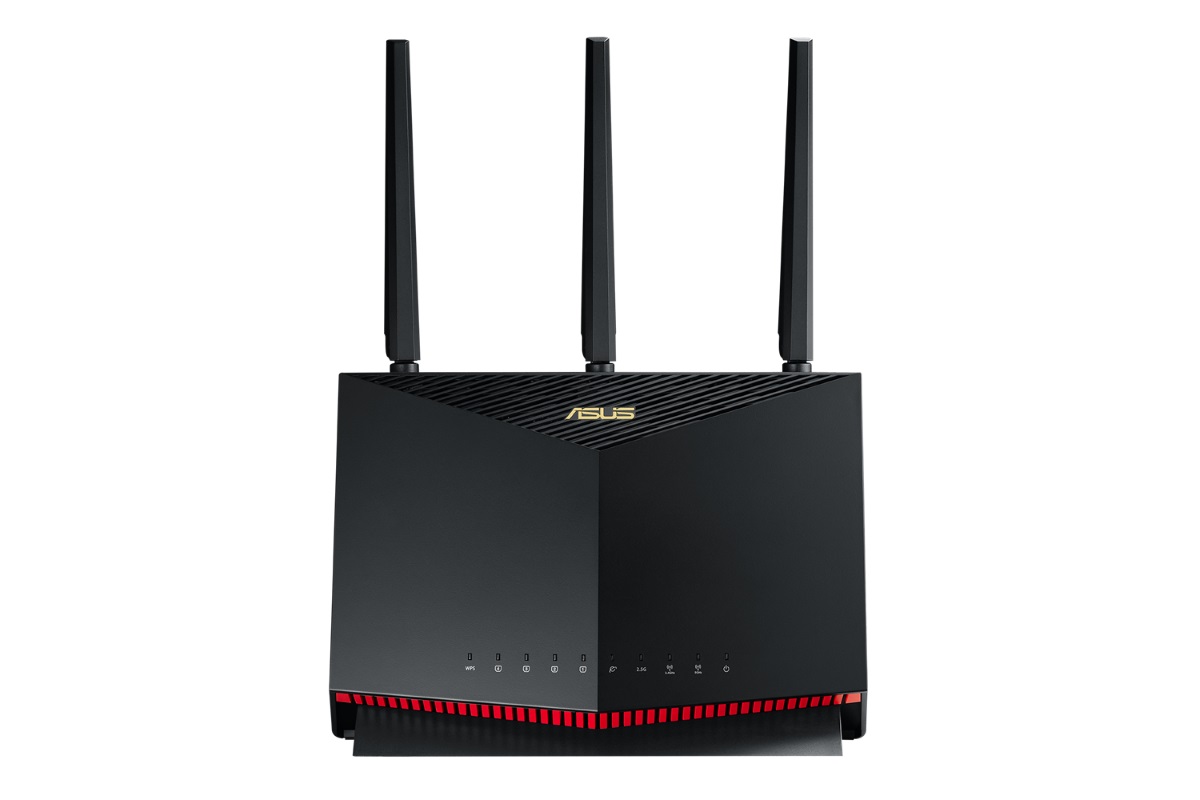

Netgear Nighthawk RAXE300
The best Wi-Fi router
- Wi-Fi 6E support
- No unsightly antenna with futuristic design
- Can be controlled with an app
- Optional services require subscription
- Still expensive
Why you should buy this: It's fully featured with Wi-Fi 6E support, priced competitively, and provides great speeds.
Who it's for: People wanting the best new router for their homes.
Why we chose the Netgear Nighthawk RAXE300:
Announced in early 2022 at CES, Netgear is looking to bring the latest Wi-Fi 6E technology into more homes with its Nighthawk RAXE300 router, which sports the same futuristic wing-shaped antenna design as the company's more premium Nighthawk RAXE500 offering. Designed for robust connectivity, the Nighthawk RAXE300 can handle speeds up to 7.8Gbps and cover homes as large as 2,500 square feet.
Thanks to a new 6GHz band, the router can efficiently handle traffic, reduce congestion, and minimize latency, which will be great for lag-free game streams, buffer-free 4K and 8K video streaming, and uninterrupted sessions of video conferencing.
Netgear boasts that its wing-shaped antenna design helps to cover your home with a reliable Wi-Fi signal while not being as aggressive as competing routers. Those in larger homes can also pick up one of Netgear's extenders to create a whole-home mesh networking solution. Like other members of the Nighthawk family, the Nighthawk RAXE300 can be controlled via an app, and optional subscription plans bring greater control and security for those who need it.

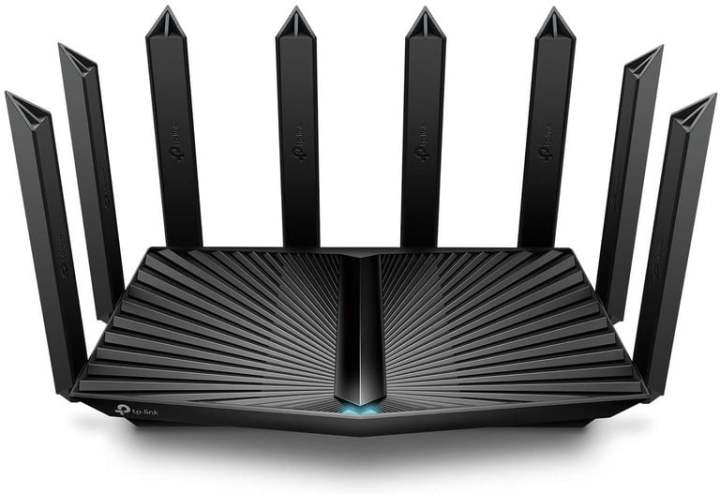
TP-Link Archer AX6600
The best high-performance router
- Wi-Fi 6 support
- Multi-gig Ethernet ports
- Solid performance
- Relatively expensive
Why you should buy this: It offers Wi-Fi 6 connectivity without compromising performance.
Who it's for: Those ready to invest in the latest Wi-Fi technology.
Why we chose the TP-Link Archer AX6600:
Like our first pick, this model supports Wi-Fi 6 — but offers a performance upgrade for those who want to push their routers to do even more.
The Archer AX6600 is an excellent dual-band Wi-Fi 6 router dishing out speeds of up to 4,804Mbps on the 5GHz band and up to 1,148Mbps on the 2.4GHz band. It's compatible with important new technologies like OFDMA and MU-MIMO and provides a USB-C port for charging and high-speed data transfers. There are also nine Gigabit Ethernet ports for many wired connections if you prefer even more reliability.
The router includes proprietary technology as well, like software that moves devices between bands if one band gets too crowded. There's Alexa compatibility, too, so you can perform basic network management actions with voice commands.
Many router manufacturers already offer Wi-Fi 6 models, but the TP-Link Archer AX6600 is particularly versatile. It's a great fit for home offices or small businesses, or for anyone who has a lot of wireless devices and wants them all performing at the top of their game.


Google Nest WiFi Pro
The easiest wireless router to use
Why you should buy this: It creates a powerful mesh network, perfect for larger homes.
Who it's for: Anyone who needs a large, uniform network.
Why we chose the Nest WiFi Pro:
The updated Nest Wi-Fi Pro is an excellent example of a mesh network router, where multiple nodes link together to form a wireless network with bigger, better coverage. The router alone covers 2,200 square feet, but you can bundle it with either one or two "points" to cover up to 5,400 square feet. It's ideal for large spaces or homes that struggle with heavy interference and dead zones.
The 2022 update to Nest routers added many welcome features, notably Wi-Fi 6E support, and support for the new Matter smart home protocol to make it even easier to set up the routers and monitor them from your phone. It also supports automatic band switching to move devices around to the best channels.
The router unit includes two Ethernet ports tucked away in a compartment on the bottom — one for the modem and one for other wired devices, like a switch or desktop. One router can reach up to 2,200 square feet, and two routers can double that.


TP-Link Archer A7
The best budget wireless router
- Affordable price
- Tether app with useful settings
- Alexa
- Limited design for coverage
Why you should buy this: Few routers can compete with the TP-Link Archer A7 at this price.
Who it's for: Anyone wanting to expand their network on a budget.
Why we chose the TP-Link Archer A7:
Looking for a budget router? This affordable model has everything you need without breaking the bank. It's a perfect fit for a home that doesn't need a ton of speed or extra-wide coverage but would still like to benefit from quality-of-life features.
This AC1750 router offers dual-band performance that can support 4K streaming and more than 50 devices, plus four Gigabit Ethernet ports for cable connections and a USB port that can connect a mini media server if you want.
The Archer A7 also includes Alexa support if you want to give voice commands. Parental controls, guest access options, and other options are built into the settings for easy control, too.

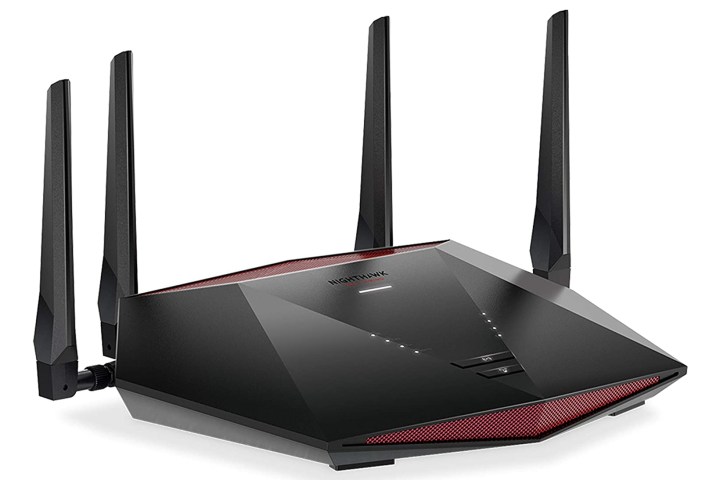
Netgear Nighthawk Pro Gaming XR1000
The best gaming router
- Solid Wi-Fi 6 performance
- Options catered towards gamers and streamers
- Malware protection included
- No multi-gig port or port aggregation
- Relatively pricey
Why you should buy this: It prioritizes game services and game data for the best results.
Who it's for: Gamers and anyone who wants the fastest network possible.
Why we chose the Netgear Nighthawk Pro Gaming XR1000:
The new Netgear Nighthawk Pro XR1000 replaces its earlier XR500 model on our list as the best router for every gamer. The XR1000 comes equipped with the latest Wi-Fi 6 technology, which is designed to help reduce latency and improve connection speeds. Netgear boasts that ping could be reduced by as much as 93% and 40% faster speeds with the Nighthawk Pro Gaming XR1000.
The Nighthawk Pro XR1000 comes with a dual-band antenna, beamforming support, geofencing to connect to closer servers, and application QoS support to give bandwidth priority to game streams, VoIP calls, and other types of media streaming. There are plenty of added software features packed into the Nighthawk app, too.

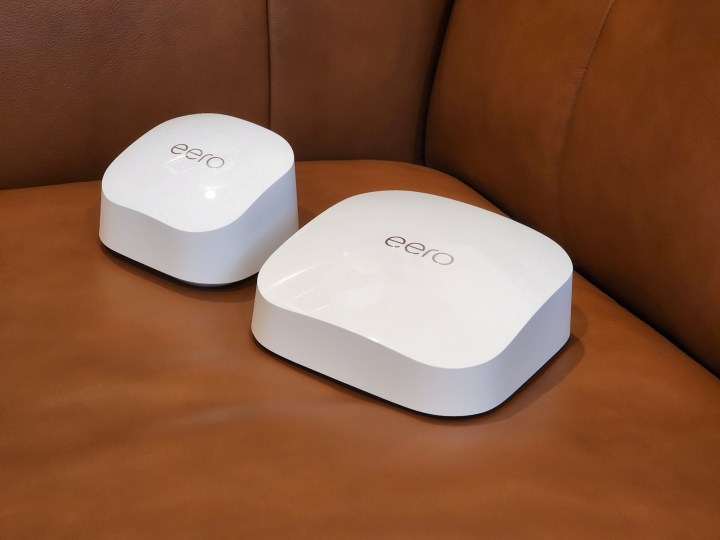
Eero Pro 6E
Best affordable Wi-Fi 6E mesh network
- Supports fast, multigig connectivity
- Wi-Fi 6E onboard
- Easy to use and setup
- Great range
- Relatively affordable compared to competitors
- No quad-band design
- Late to the Wi-Fi 6E game
Why you should buy this: Mesh routers help blanket your home with reliable Wi-Fi coverage, and Eero's top-of-the-line model delivers all this in a simple, easy-to-use solution.
Who it's for: Businesses, offices, and large homes struggling with coverage issues.
Why we chose the Eero Pro 6E:
The Pro 6E is the latest model to join Eero's mesh family of routers, and it's by far the company's best effort in the space. Retaining the familiar and minimalist design of Eero's prior mesh routers as well as the line's simple-to-set-up and easy-to-use app interface, the Eero Pro 6E adds support for Wi-Fi 6E, which opens the doors to multi-gigabit support over wired and wireless connections. While Eero isn't the first to Wi-Fi 6E support — rivals Linksys' Atlas Max 6E and Netgear's Orbi RBKE963 had beat it to the punch with mesh systems that promise more powerful coverage — Eero strikes a good balance between performance, features, and affordability, making it a great contender in the space for families looking to add Wi-Fi 6E to their network.
In our Eero Pro 6E review, we found that it delivers strong coverage with limited degradation to speeds or any noticeable increase in latency across a large space, and the company claimed that a setup with two additional nodes can blanket a home as large as 6,000 square feet. You can also add even more nodes to amplify your Wi-Fi signal across even larger spaces: In fact, that capability has gotten much more interesting thanks to the newest Amazon Echo Dot, which can serve as both an Alex speaker and an Eero satellite to expand your coverage.
But if you don't need the level of performance from the Eero Pro 6E, be sure to check out Eero's other Wi-Fi 6-enabled mesh systems, including our reviews of the Eero 6 and the Eero 6+, as well as the Eero Pro 6.

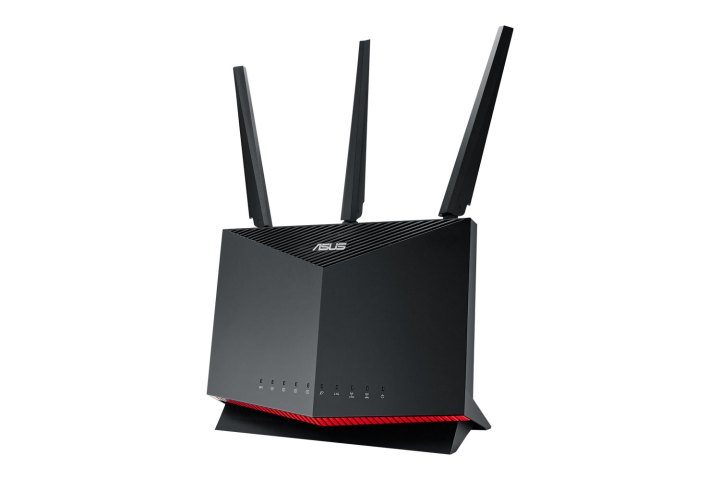
Asus RT-AX86U
Best router for mobile gaming
- Mobile gaming mode
- Dedicated gaming port
- Wi-Fi 6
- Mesh and security software included
- Not as useful if there aren't any gamers around
If you and your family love playing games on phones or tablets, this compact router is designed to keep up. In addition to Wi-Fi 6, it includes a mobile gaming mode designed to cut down on lag and latency when multiple people are gaming on their mobile devices. It also works with Asus’s AiMesh technology that can create a mesh network with other devices, along with other security and parental control software built in.
The routers aggregated 2Gbps speeds are sufficient for all kinds of online activities, and the WPA3 encryption offers the latest password protection available. If you have an Ethernet connection for a particular console or computer, the router includes a gaming port that will prioritize any device connected to it, making sure that your internet connection won’t let you down in a busy household. Also, if you use Nvidia cards, the router is GeForce Now recommended, which means it has Nvidia’s stamp of approval for Now cloud gaming.

Frequently Asked Questions
A wireless router has a wired connection to the modem, the device that connects to the broader internet infrastructure outside your building. The router takes that internet data and turns it into a radio signal (far outside the range of human hearing) that can be broadcast across the surrounding area. Our electronic devices are equipped with receivers that pick up these signals and translate them back into data our devices need to create the content we see, hear, and use on our screens.
These are radio frequency bands that are specifically set aside to communicate wireless data. The two primary bands are 2.4GHz and 5GHz. Dual-band routers can broadcast Wi-Fi signals on both these bands at once, allowing devices to switch between bands depending on where there is the least interference. Some routers use a second section of the 5GHz band for additional possibilities, so these are called tri-band routers.
The two bands can be broken down further into channels, or narrower sections of the radio spectrum, but this usually isn't necessary unless you're doing a pinpoint analysis of what frequencies are best in a specific area.
Wi-Fi is always undergoing improvement in things like how data is efficiently packaged into radio signals, what security it uses, and how it forms connections with electronic devices. That means that the Wi-Fi protocol — the standards and data formats that routers use — occasionally changes so much that a new protocol is developed to incorporate all the technological advances and, well, level up Wi-Fi.
In the past, Wi-Fi protocols were named after codes like 802.11ac. This refers to the specific IEEE (Institute of Electronics and Electronics Engineers) local area network standards, sort of like citing chapter and page for reference. But when the 802.11ax protocol arrived, there was a broad decision to change the naming conventions and simply call it "Wi-Fi 6" to make things easier for the consumer. The next protocol will almost certainly be called Wi-Fi 7, but that's still years away.
A router (and receiving devices) needs to be compatible with a protocol to use it: Protocols contain a lot of backward compatibility for older devices, but an older router won't be able to use a new protocol, which is why it's always important to see what protocol a router has before buying. These days, look for routers branded Wi-Fi 6 or Wi-Fi 6E to enjoy the latest advances. However, if your home broadband plan comes with speeds less than a gigabit, you can save some money by going with a slightly older Wi-Fi 5 router at this time.
We already mentioned how important Wi-Fi 6 is for our current crop of routers and devices. Other important features to watch for include:
Dual-band or tri-band capabilities to help manage multiple devices more easily
Beamforming or similar technologies that can help target devices and prevent dead zones
WP3 encryption
Automatic optimization to prioritize certain kinds of traffic, devices, or activities like gaming
Technologies like MU-MIMO (supported by Wi-Fi 6) that allow for more direct Wi-Fi connections to specific devices
Security features to help detect unwanted devices, add guest networks, or add parental controls as needed
Gigabit Ethernet ports for additional high-speed cable connections, if necessary
A smartphone app that can be used for installation and monitoring
Mesh network capabilities if you want to cover a particularly broad area
Compared to many electronic devices, routers are a long-lived bunch. They can often last for five years or longer without developing any problems that would require a replacement. However, replacing a router every few years is a good way to ensure you are keeping up with the latest technology and security, not to mention Wi-Fi speeds. If you start to see more and more devices supporting a new standard like Wi-Fi 6, that's an excellent reason to look for a new router. More advanced routers, like home mesh systems, are also smarter than traditional routers. These systems benefit from regular software updates and security patches that are applied at night during downtime, which requires no action on your part. And if you choose, you can check for available software updates through the companion smartphone app. Wi-Fi 7 is currently in development, and routers supporting this standard are not expected to hit the market until 2024.
Routers have long had the ability to expand their signals via repeaters, or devices that take the router signal and replicate it in a different area, reaching more space and fixing problems like dead zones and dropped connections. A mesh router is simply a more advanced, user-friendly version of this idea in one package, allowing homeowners to blanket their property with good Wi-Fi coverage and reduce dead zones. Routers like Eero 6 Pro and Nest WiFi Pro have a primary router to serve as a hub, and satellite routers that are made to connect to it. These mesh systems are strong solutions for businesses, venues, and other large areas.
While mesh routers have been a pricey investment in the past, that's not always true today — Vilo's latest mesh system starts at $20 for a single router and $60 for a three-pack to extend Wi-Fi signal to remote corners of your home. But you don't have to buy a dedicated mesh system to get the benefits of this type of network — some manufacturers even allow you to convert traditional routers into a mesh system by purchasing additional main units or satellite nodes and connecting them together to create a mesh network through a smartphone app. One example of this is the ASUS ROG GT-AX11000, which can be used as a stand-alone gaming router or be added to a mesh system.
Your internet speed is primarily decided by your provider and local infrastructure. However, a better router can offer many features that remove roadblocks to potentially higher speeds or make the speed you experience seem faster. If your current ISP (internet service provider) plan promises speeds that you never see on your Wi-Fi network, try a direct cable connection and run speed tests again. If your speed noticeably improves via a wired connection, that means a better router is more likely to increase your speeds, too.
Even if your broadband speeds never get even close to what's promised by a Wi-Fi 6 router, there are still several advantages to upgrading. The technology delivers more bandwidth to each device that's connected, helping to ensure that local transfers aren't interrupted, and lag is less of a problem. Latency is also reduced, which is a benefit for responsive gaming and augmented reality and virtual reality applications. You can also connect more devices to your network, which will help owners expand their collection of smart home gadgets.
Gaming routers include software that can identify and prioritize gaming connections so they get the bandwidth they need to avoid lag or graphics issues. Some also work to connect to closer servers so that server issues are less likely to occur. These features are not necessary for a satisfactory wireless gaming experience, but if that's what you use Wi-Fi for, then they are certainly worth looking into. Our Netgear Nighthawk Pro Gaming XR500 pick is a great place to start, but there are other gaming routers at a variety of price levels.
This more advanced version offers support for the 6GHz band, a new section of frequencies now designated for Wi-Fi. It's a short-range band that is more useful for environments with many wireless devices, such as an office or tech store, but not especially important for low-density areas.
They can, but the sheer number of antennas on a router isn't the only thing that matters. If your Wi-Fi is spotty, try angling antennas toward your dead zones to see if that helps. On today's routers, it's often the overall placement (how high the router is, if it's next to any walls or appliances, etc.), and the beamforming software inside that makes as much or more difference than antennas. That's another reason more routers are using durable wing designs, and why mesh routers rarely have antennas at all.
Firewalls are common features on today's routers. These are security filters that block suspicious data from arriving at your device from the internet. A firewall on router software can monitor all the data entering your Wi-Fi, no matter what device it goes to, so it's very efficient. The firewall on your computer only monitors the data coming to that computer.
Router firewalls may also cause some problems in smart homes or with certain mobile apps, etc., so you should be careful using them.
Is your router not acting as you'd hoped? You may want to go through our list of the most common Wi-Fi problems and what solutions can work for you.
Editors' Recommendations
- This Lenovo gaming laptop with an RTX 3070 Ti is $730 off right now
- This Lenovo Legion gaming PC with an RTX 3080 is $750 off
- HP just discounted a load of its best-selling laptops
- Your excuse to buy this 34-inch curved Samsung QHD monitor
- Last chance to get the Dell Inspiron 15 for $220



